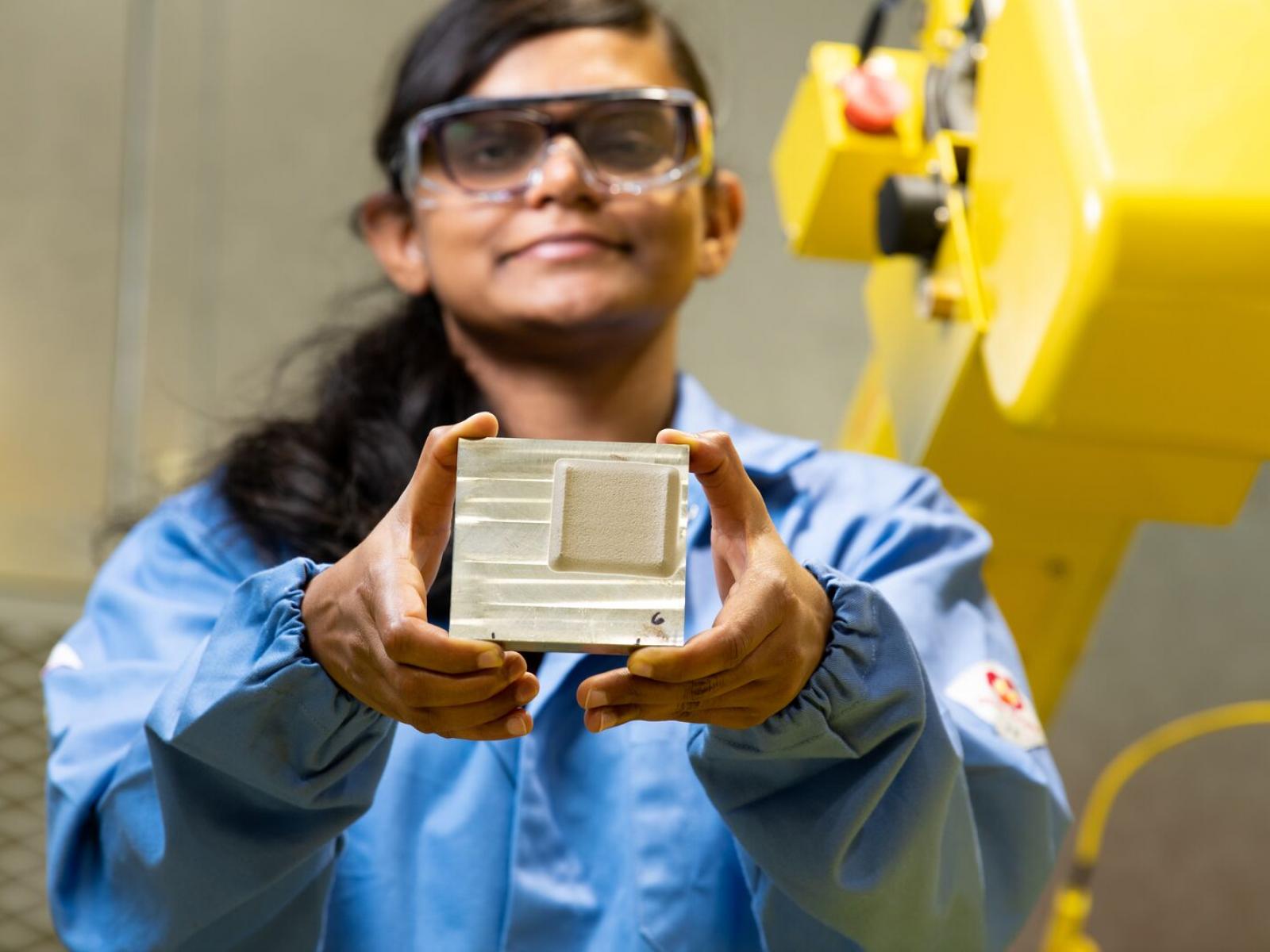Advances in Renewable Energy Are Being Made by PNNL Scientists

Earth scientist Raghavendra Krishnamurthy, shown here near a wind project in Kennewick, Wash., conducts research to improve understanding of the offshore marine boundary layer and, in turn, how it impacts modern wind turbines used in offshore energy projects.
(Photo by Andrea Starr | Pacific Northwest National Laboratory)
March is known for many things green—St. Patrick’s Day, the first day of spring and National Renewable Energy Day, which is March 21.
Referred to as “green” energy, the energy harnessed from the sun, water, wind and ground is considered renewable because it comes from natural, continuously replenished sources.
At the Department of Energy’s Pacific Northwest National Laboratory, scientists and engineers are researching, developing and deploying renewable energy solutions that can offset or replace energy produced from fossil fuels.
Their contributions will help our state and the nation transition to 100 percent clean electricity while creating well-paying jobs and combatting climate change.
Researchers at PNNL take a multidisciplinary approach to integrating renewable energy into a strong, resilient electric system.
They predict renewable resource availability and adapt technologies to exploit these resources more efficiently and with fewer environmental impacts.
They also help plan for the increased flexibility the electric grid needs to incorporate these variable sources of energy.
Our nation’s grid was designed 100 years ago, based on large, centrally located power plants and a system for distributing the power to homes and businesses.
Renewable power plants are much smaller, with resource-based locations and increased operational complexity.
PNNL’s experts are equipping grid operators with tools to plan and manage the grid so it can be reliable, cost effective, efficient and secure even as more renewable energy is brought online.
Researchers at PNNL are applying their expertise in materials science to develop new grid-scale energy storage solutions needed to support this clean energy future.
Batteries provide a buffer to keep the grid reliable and strong despite the growing intricacies of matching supply and demand. They also can be incorporated into standalone, localized energy systems called microgrids that can serve remote areas and enhance resiliency.
At the same time, Earth scientists are improving our ability to predict the availability of different renewable resources.
This work includes studying how climate change impacts water availability for hydroelectricity production in different seasons and throughout the year.
This is important for planning power production and because hydropower can quickly ramp up to stabilize the grid, keeping outages from spiraling out of control.

Another project seeks to improve the accuracy of models of wind flow through a wind farm, using data collected in the Columbia Basin. To assess the potential for offshore wind energy, PNNL is studying data collected by two research buoys equipped with meteorological and oceanographic instruments.
Shifting from air to sea, researchers also are identifying the best regions for developing infrastructure to harness wave and tidal energy.
Drawing on PNNL’s strengths in sensors, researchers are helping to understand and mitigate the environmental impacts of renewable energy systems, including protecting salmon that encounter the hydroelectric dams that produce more than two-thirds of Washington’s electricity.
Researchers developed rice-sized tags to track the behavior of juvenile salmon as they pass through hydroelectric dams, gathering data that help engineers design safer turbines for improved migration routes.

In another project, a different sensor system tracks birds and bats, profiling their behavior around offshore wind turbines.
Digging into our subsurface science capabilities, PNNL is advancing enhanced geothermal energy systems that convert heat deep below the Earth’s surface into electricity.
Building on technology developed to study contaminants beneath the Hanford site, scientists demonstrated a time-lapse, 3D view of how deep fractures in underground rock change over time that could provide valuable insights.
Beyond the examples highlighted here, PNNL applies its expertise to address a range of renewable energy challenges.
Our researchers are helping to realize the benefits of a clean and resilient energy system that is affordable and accessible to all.
Thanks to these efforts and many others, we can look forward to a greener future. Happy National Renewable Energy Day!
Steven Ashby, director of Pacific Northwest National Laboratory, writes this column monthly. To read previous Director's Columns, please visit our Director's Column Archive.
Published: March 21, 2022